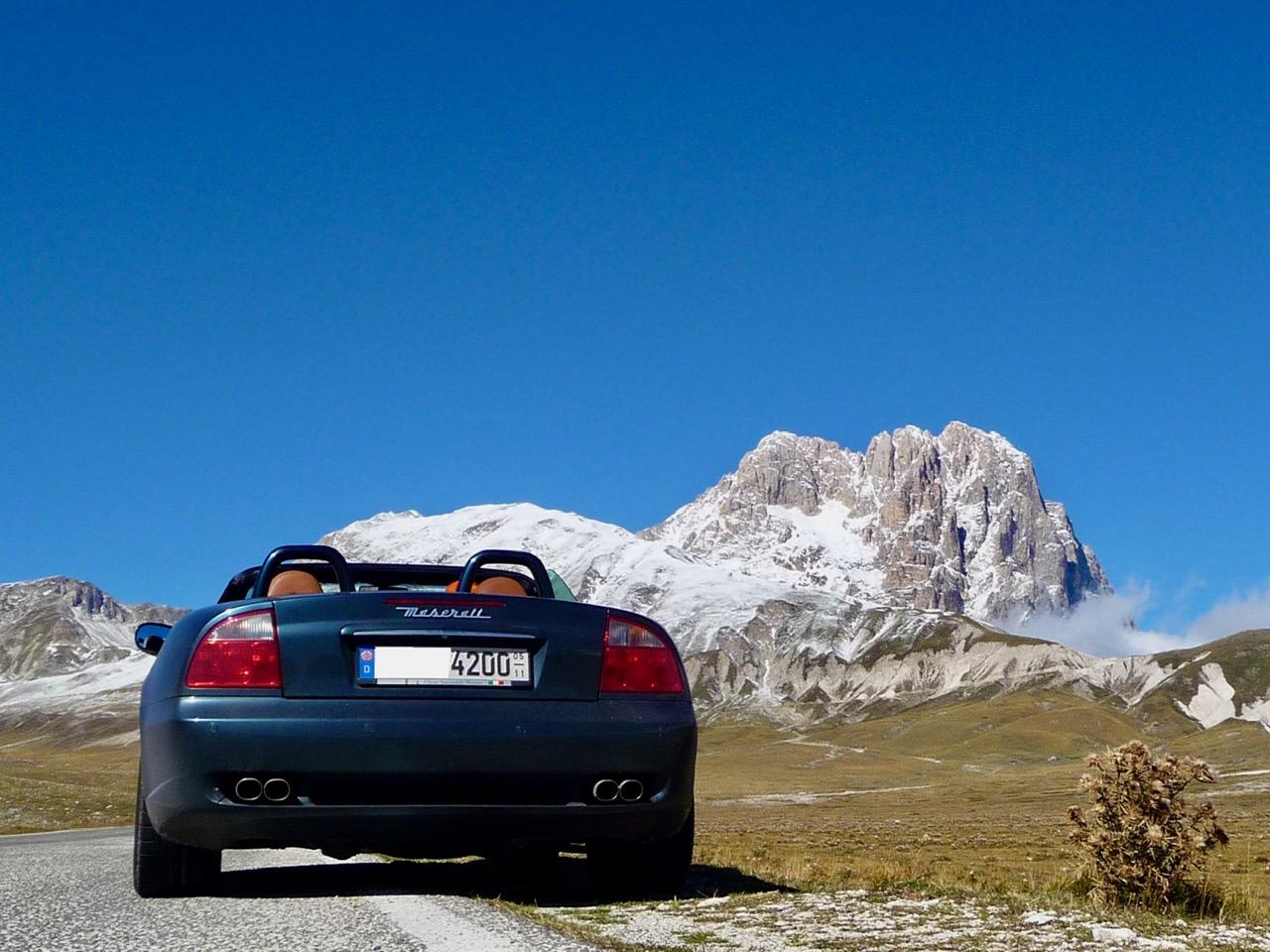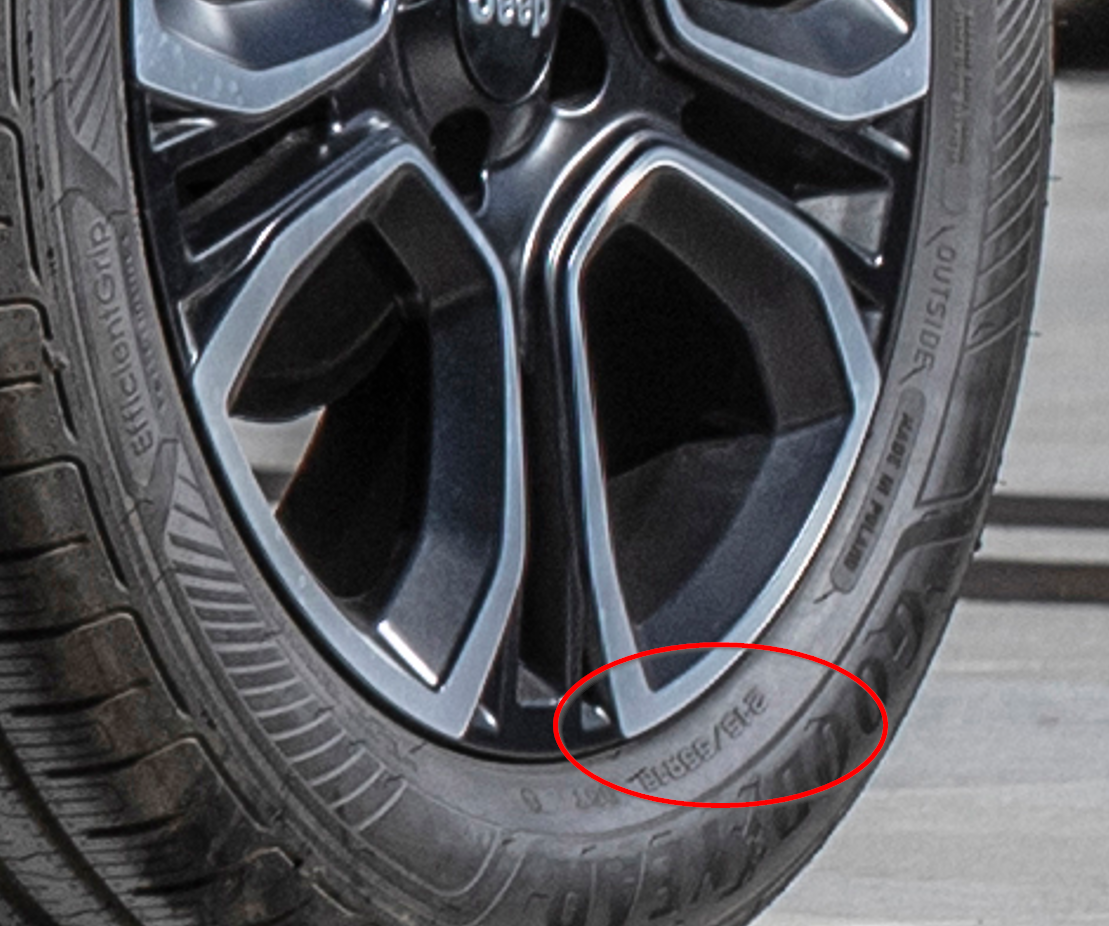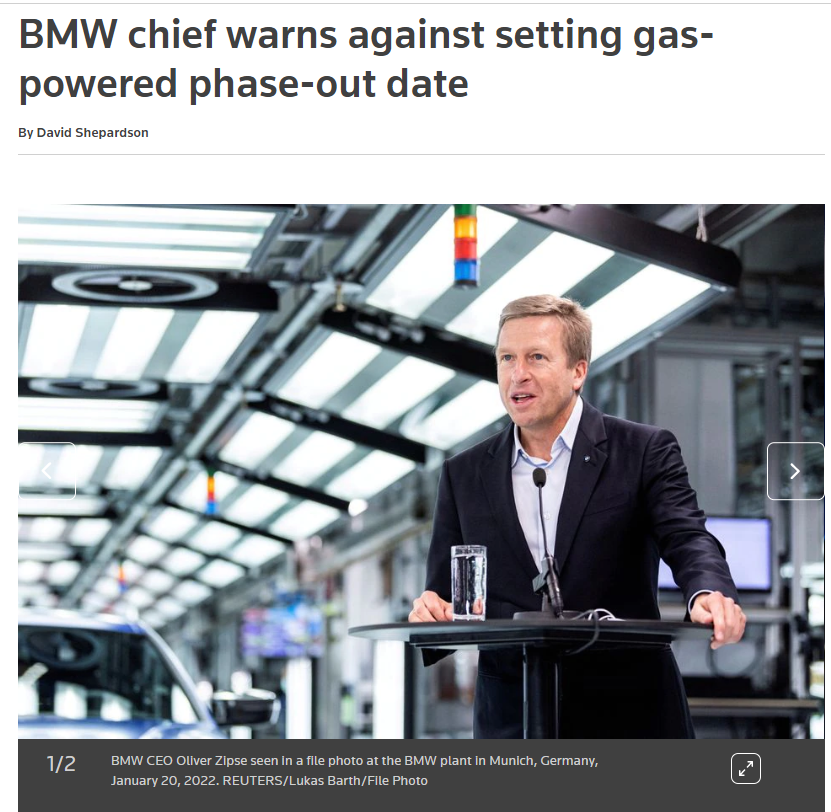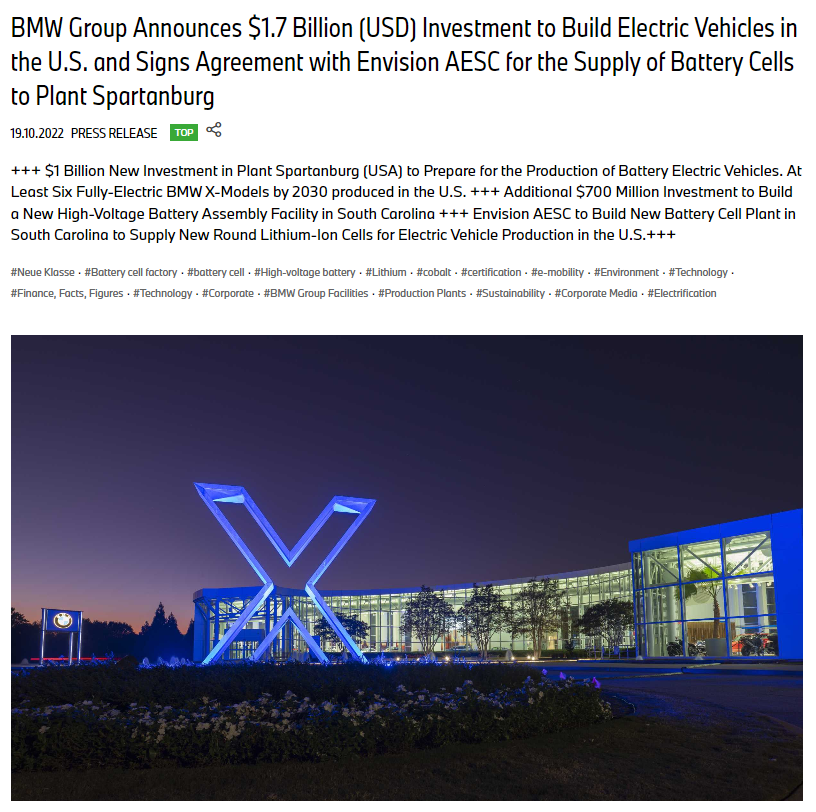-
Numero contenuti pubblicati
13041 -
Iscritto il
-
Ultima visita
-
Giorni Massima Popolarità
58
Tipo di contenuto
Forum
Galleria
Calendario
Download
Articoli del sito
Store
Blog
Tutti i contenuti di 4200blu
-
Si d'accordo, ma al momento questo posizionamento esiste solo su Powerpoint. Adesso devono anche creare i prodotti e la strategia marketing che servono per trasportare questo posizionamento virtuale agli possibili clienti reali. Ed iniziare questo processo proprio con una seg-B su una base Peugoet scadente non mi sembra il massimo e perfettamente adatto per partire con questo piano...ma vedremmo.
-
- 1500 risposte
-
- jeep 516
- jeep ufficiale
- (e 6 altri in più)
-
…no, Michelin….. 😉
- 1500 risposte
-
- jeep 516
- jeep ufficiale
- (e 6 altri in più)
-
BF Goodrich mi sembra...
- 1500 risposte
-
- 1
-

-
- jeep 516
- jeep ufficiale
- (e 6 altri in più)
-
👍👍👋
-
....non sono Lancia nel senso della DNA della marca ....Ypsilon Mini-Suv su base Peugeot costruzione low cost voglia essere una Lancia.... LOL 🤣.. Vincenzo ruoterebbe nella tomba quando vedrebbe un cesso cosi...
-
Ho nella garage tra l'altro anche due Delta Integrale e mi divertirmi tantissimo ogni volta le uso, comunque non credo, che la DNA vera e storica del marchio Lancia sono macchine di quell' tipo. Per il futuro, per avere una piccola chance per successo, secondo me si dovrebbe orientarsi alla linea dei macchine piu lussuoso e piu gran turismo come le diverse Thema (naturalmente 834, non quello cesso americano), Flavia e Flaminia.
-
..senza dubbio vero...ma questa e un altra discussione. Se va in vigore 2027 poi sono 8 anni fino al divieto totale della ice, per questi 8 anni costruire motori nuovi (con una quota mercato bev gia al diciamo 50%) che saranno prodotti poi in volume discreto per solo una generazione di auto e una folia, senza dubbio, ma le decisioni a Bruxelles al momento sono cosi.
-
..non credo che ci saranno molti concorrenti di questo tipo...secondo me il seg.A Ice muore esattamente con la Euro7 perche non e possibile di produrre macchine cosi ad un prezzo accetabile.
-
👋👋👋
-
....aspettiamo quanta costa una Panda Euro7 e quante poi vendono a questo prezzo.....ma certo, al momento la data quando va in vigore Eu7 non e fissato finalmente.
-
Qui si legge della versione "Taycan mille cavalli" come "Plaid-Killer"....😝
-
esatto... 215/65-16” = 689mm diametro 215/60-17” = 686mm 215/55-18” = 686mm cosi quasi tutti i tre molto molto vicino alle 690mm della descrizione.
- 1500 risposte
-
- jeep 516
- jeep ufficiale
- (e 6 altri in più)
-
...diventera il "new normal", uguale se ti piace o no.
- 1500 risposte
-
- jeep 516
- jeep ufficiale
- (e 6 altri in più)
-
..si si tutto giusto. Io sono sciatore maniaco, pista e alpinismo, normalmente spendo piu giorni di vacanze in inverno come in estate ... pero esattament questa stagione con prezzi gas quadruplicato (almeno qui in Baviera) e il pericolo di black out per mancanza del gas non sarebbe arrabbiato con il tempo, se quest'inverno sara abbastanza caldo.
-
...perche purtroppo?? Risparmia gas se rimanera caldo.
-
..anche per una range extebnder saranno validi tutti i limiti della Euro7 con tutti i problemi dei costi e poi anche la conseguenza per il limit Co2 della flotta..non e altro come una ibrido con i suoi punti deboli, sopratutto cosri e complessita di due propulsori...cosi secondo me appena per una macchina low cost molto improbabile.
-
Punto di vista di Zipse simile quello di Tavares per la fine delle ice: GREENVILLE, South Carolina, Oct 19 (Reuters) - Setting a date to phase out gas-powered vehicles could remove "cheap cars" from the market, putting ownership out of reach for many, and be politically dangerous, the board chair of German automaker BMW Oliver Zipse (BMWG.DE) said on Wednesday. Speaking ahead of the announcement of a $1.7 billion electric vehicle (EV) investment in South Carolina, Zipse said in an interview that BMW has not set a date to end production of gas-powered vehicles and cautioned against banning their sale. "We don't want cars to be taken away out of the base segment, politically that's super dangerous," Zipse said. "If you all of a sudden make car ownership only for rich people, it's a dangerous thing." BMW backs ambitious vehicle regulations, Zipse said, but setting a firm date to end combustion engine sales could also result in people continuing "to drive their old cars - and that is not what we want." Zipse told a crowd at its EV announcement that "it's a free nation -- we offer choice and not limitations." Rival automaker General Motors (GM.N) has said it plans to end sales of gas-powered passenger vehicles by 2035. California in August adopted rules to require all new vehicles sold in the state by 2035 to be either electric or plug-in hybrids. Zipse said "there is no signal" that on a global scale the combustion engine will be obsolete within the next 15 years. Asked when BMW will produce its last combustion engine, he joked: "We should ask this vase maybe?", adding the automaker did not know. (Reuters)
- 256 risposte
-
- rolls-royce
- scelte strategiche
-
(e 2 altri in più)
Taggato come:
-
- 138 risposte
-
- smart ufficiale
- smart
-
(e 1 altro in più)
Taggato come:
-
Spartanburg (USA)/Munich. The BMW Group continues the roll-out of its electromobility plan with a new investment in the U.S. to expand Plant Spartanburg and the company’s manufacturing footprint in the U.S. BMW Group Chairman of the Board of Management, Oliver Zipse, announced today a $1.7 billion investment in its U.S. operations, including $1 billion to prepare for the production of electric vehicles at the company’s existing U.S. manufacturing facility in South Carolina, and $700 million to build a new high-voltage battery assembly facility in nearby Woodruff, SC. By 2030 BMW Group will build at least six fully electric models in the U.S. Zipse was joined today at Plant Spartanburg by South Carolina Governor Henry McMaster, Secretary of Commerce Harry Lightsey III, Chairman of Spartanburg County Council Economic Development Committee, David Britt, and Woodruff, SC Mayor, Kenneth Gist as he also announced an agreement to source next generation lithium-ion battery cells from Envision AESC, which will build a new plant in the state. “For decades, Plant Spartanburg has been a cornerstone of the global success of the BMW Group. The home of the BMW X models that are so popular all over the world. Going forward, it will also be a major driver for our electrification strategy, and we will produce at least six fully electric BMW X models here by 2030. That means: The ‘Home of the X’ is also becoming the ‘Home of the Battery Electric Vehicle’,” said Zipse on Wednesday. “In addition, we can showcase BMW Group’s ‘local for local’ principle: Our newly developed sixth generation battery cells, which were specifically designed for the next generation electric vehicles, will be sourced here in South Carolina – where X goes electric.” Envision AESC Battery Cell Plant in South Carolina to Supply Plant Spartanburg In line with the principle of "local for local,” the BMW Group aims to purchase battery cells for its electric vehicles where production takes place. The company has found a partner in Envision AESC, which will build a new battery cell factory in South Carolina, to supply Plant Spartanburg. Envision will produce newly developed round lithium-ion battery cells, which were specifically designed for the sixth generation of BMW eDrive technology, and will be used in the next generation electric vehicles. The annual capacity of the battery cell factory will be up to 30 GWh. The new battery format will increase energy density by more than 20 percent, improve charging speed by up to 30 percent and enhance range by up to 30 percent. At the same time, CO2 emissions from cell production will be reduced by up to 60 percent through the partial use of secondary lithium, cobalt and nickel material, as well as renewable energy for production. The cooperation with Envision AESC is an important step in the BMW Group's plan to strengthen its regional supply chains. The expansion of electric vehicle production in combination with a local battery cell factory will lead to the creation of new supply chains, new networks for sub-suppliers, and new jobs throughout the entire region. BMW Group has already announced that four additional battery cell factories will be built in Europe and China to meet its demand for next generation battery cells. The cell factories are being built by partners and will each have an annual capacity of up to 20 GWh. Increased Investment and Expanded Manufacturing Capacity in SC Of the new $1.7 billion investment announced today, $700 million will be used to build a new high-voltage BMW battery assembly center in Woodruff, SC, near Plant Spartanburg. The new facility will encompass over 1 million sq. ft., and produce next generation batteries for fully electric vehicles. Around 300 new jobs will be created on site. Plant Spartanburg currently produces lithium-ion battery modules for the two plug-in hybrid electric vehicles built at the plant, the BMW X3 xDrive30e (fuel consumption combined: 2.6-2.0 l/100 km WLTP; power consumption combined: 20.5-18.9 kWh/100 km WLTP, CO2 emissions combined: 59-45 g/km WLTP) and BMW X5 xDrive45e (fuel consumption in l/100 km combined: 1.7-1.2 WLTP; power consumption in kWh/100 km combined: 27.7-24.3 WLTP; CO2 emissions in g/km combined: 39-27 WLTP.). In 2021, nearly 70,000 electrified BMWs were built on site. The site in Woodruff will also leverage the experience and expertise developed in Plant Spartanburg’s existing operations at the new facility. “BMW’s sustained and impactful presence in South Carolina demonstrates the power of partnership and shared commitment to our state’s automotive industry success,” said Governor McMaster. “With today’s announcement of a $1 billion expansion to Plant Spartanburg for manufacturing electric vehicles as well as $700 million for a new plant in Woodruff to assemble battery units, the road to the future is here. And I applaud BMW on helping lead the way.” BMW Group Plant Spartanburg Plant Spartanburg was established 30 years ago and began producing vehicles two years later. Since then, the plant has become the global center of competence for BMW Sports Activity Vehicles and a critical component of the company’s global production network. The plant currently represents an investment of nearly $12 billion, employs more than 11,000, and has an annual capacity of up to 450,000 vehicles. To date more than six million BMW vehicles have been built in the U.S. – for the U.S. and global markets. Based on this strength, BMW has been the largest automotive exporter from the U.S. by value for the past eight years. Plant Spartanburg currently produces 11 models including the BMW X3, X4, X5, X6 and X7 Sports Activity Vehicles, four BMW M models and two plug-in hybrid electric models. Production of the all-new hybrid-electric BMW XM (fuel consumption in l/100 km combined: 1.6-1.5 WLTP; power consumption in kWh/100 km combined: 30.1-28.9 WLTP; CO2 emissions in g/km combined: 36-33 WLTP. Preliminary figures that have not yet been officially confirmed.) will begin later this year. The plant is supported by more than 300 suppliers in the U.S., including over 40 direct tier 1 suppliers in South Carolina alone. “This is a very important step for Plant Spartanburg as we continue our legacy of producing high-quality vehicles, and build on the success of the last 30 years,” said Robert Engelhorn, President and CEO, BMW Manufacturing Co. “With this latest investment, we futureproof our operations and prepare the plant for electrification and new technologies, ensuring both the long-term success of our company and our position as an attractive and viable employer in the state of South Carolina.” Ongoing Commitment in the U.S. In addition to sales and marketing operations, the BMW Group footprint in the U.S. consists of nearly 30 locations in 12 different states, including an advanced design studio, a technology research and development center, and a venture capital fund in California, BMW Group Financial Services, and BMW Manufacturing Corporation, which operates Plant Spartanburg in South Carolina. The BMW Group dealer network consists of nearly 650 independently owned BMW, MINI, Rolls-Royce and BMW Motorrad dealers nationwide. Taken together, the BMW Group’s operatons in the U.S. directly and indirectly provide and support more than 120,000 jobs in the U.S., and has contributed $43.3 billion to the U.S. economy. “Technology Openness” and Customer Focused Flexibility BMW Group is clearly focused on a sustainable future and shares common ambition in the U.S. with regard to climate goals and the reduction of greenhouse gas emissions. At the same time, the company is following a path of “technology openness” to offer a choice of fully electric, plug-in hybrid electric, and highly-efficient internal combustion options to its customers in meeting their diverse needs in vastly different geographies across the nation. BMW Group is committed to fulfilling its goal of making a minimum of 50% of its global sales battery electric vehicles by 2030. 360-Degree Approach BMW Group has also set an initial target to reduce CO2 emissions by 40% per vehicle by 2030. As BMW Group works towards the goal of climate neutrality, the company is focused on the reduction of CO2 emissions throughout a vehicle’s entire life cycle. Design and Engineering: Beyond simply electrifying its product portfolio, BMW Group begins the design and engineering phase of vehicle development with a ‘secondary first’ approach, so that currently on average nearly 30 percent of materials used in BMW Group vehicles are recycled or reused. In the longer term, the “secondary first” approach aims to increase this figure to 50 percent. Supply Chain and Procurement: BMW Group has been actively involved for many years in initiatives to develop standards for responsible raw material extraction and promote compliance with environmental and social standards for raw material extraction through certification of mines. The cobalt and lithium used as raw materials for the new generation of BMW battery cells will be sourced from certified mines which allows the company retains full transparency over extraction methods and ensures responsible mining. Vehicle Production: BMW Group’s global production network also relies on renewable energy such as solar, wind, and hydroelectric power in the manufacturing phase of its vehicles. All of the company’s production sites have been net CO2 neutral by offsets since 2021. Vehicle Use Phase: BMW Group is also working to ensure that the electricity generated to charge battery electric vehicles is done so sustainably. For example, partnerships with dairy farms in California reduce greenhouse gas emissions by capturing methane gas and transforming it into renewable energy, which is exported to the power grid. The company also operates a pilot program called ChargeForward in the San Francisco Bay Area which makes it possible for owners to charge their vehicles with as much solar energy as possible. Vehicle Recycling & Post-Life:From the start BMW Group vehicles are designed with recycling in mind, thereby improving the possibility for components to be recycled or reused. The company has already demonstrated the ability to recover more than 90% of the material from high-voltage batteries and has approximately 3,000 collection points worldwide for the recycling of end-of-life vehicles. As the BMW Group continues towards an electric future, the company is looking beyond the vehicles themselves to ensure that it delivers sustainable solutions across the value chain and throughout the entire lifecycle of the vehicle. In the U.S. BMW currently offers two fully electric vehicles including the BMW iX Sports Activity Vehicle and the BMW i4 Gran Coupe. The fully electric BMW i7 Sedan (power consumption in kWh/100 km combined: 19.6-18.4 WLTP) will come to market later this year and BMW will make a significant step forward. For more information about the BMW Group’s focus on sustainability and unique approach to electrification, please visit: https://www.bmwgroup.com/en/sustainability.html (BMW Group)
- 256 risposte
-
- rolls-royce
- scelte strategiche
-
(e 2 altri in più)
Taggato come:
-
...si...dal 1.lug 2020 lui e head of design VW PKW (autovetture).
- 177 risposte
-
- 1
-

-
Stellantis CEO calls for talks to soften EU's 2035 fossil-fuel car ban Carlos Tavares calls for hybrid models to play a greater role in the transition to zero-emission vehicles. PARIS -- The European Union's proposed 2035 ban on fossil-fuel cars should be renegotiated to give hybrid models a greater role in the transition to zero-emission vehicles, Stellantis CEO Carlos Tavares said. "It's essential," Tavares said during a news conference at the Paris auto show, when asked if talks on the ban were needed. "The dogmatic decision that was taken to ban the sale of thermal vehicles in 2035 has social consequences that are not manageable." Tavares' comments come as the EU is currently finalizing a package of climate proposals, which currently includes an effective ban on the sale of new fossil-fuel vehicles from 2035. Under the EU's proposals, plug-in hybrids would only count as low-emission vehicles until 2030. Tavares said forcing a transition to electric vehicles (EVs), which are more expensive than fossil-fuel or hybrid equivalents, will make car ownership unaffordable for many. "If you deny the middle classes access to freedom of movement, you are going to have serious social problems," Tavares said. Some automakers have embraced hybrids, especially plug-in hybrids, as a bridge technology to get to full-electric vehicles and have argued that after investing billions of euros in the technology they should be allowed to sell them for longer. "What we have to offer our European leaders is a transitional solution," Tavares said. With a mild hybrid you can maintain "the affordable size of these vehicles and reduce CO2 emissions by 50 percent," he added. Automakers and suppliers have also argued going electric will cost tens of thousands of jobs among workers who make components for or assemble internal combustion engines. Separately, Tavares said Stellantis is also considering an "asset light" strategy for its Peugeot and Citroen brands in China, where it would import mostly finished vehicles into China rather than produce them at local assembly plants. The CEO said talks were ongoing with Chinese partner Dongfeng, which could end up where "we do not need a factory in China." Stellantis has had problems in China, the world's largest car market, and has been looking at options to turn around its business. That includes the idea of importing vehicles rather than running underutilized factories at a loss. (Reuters)









